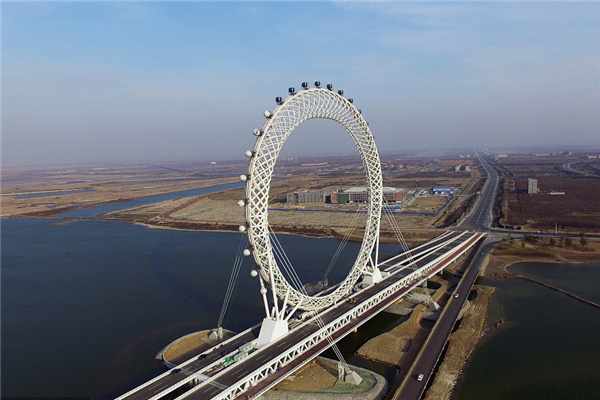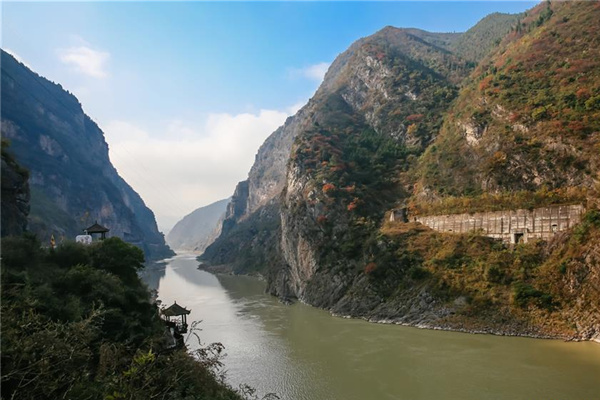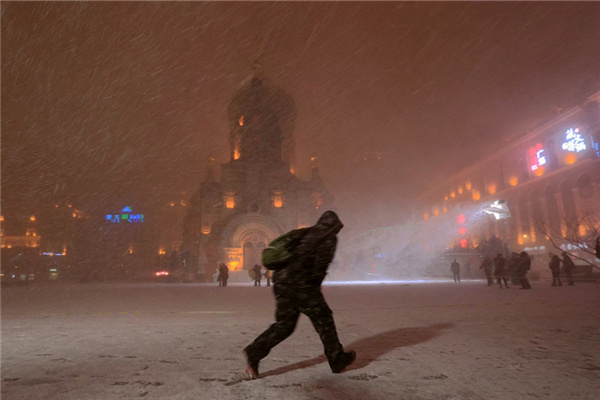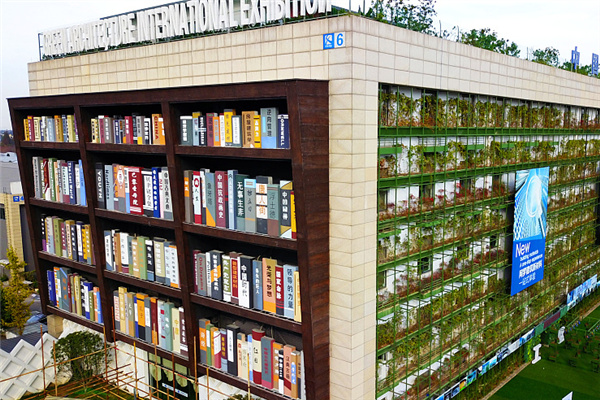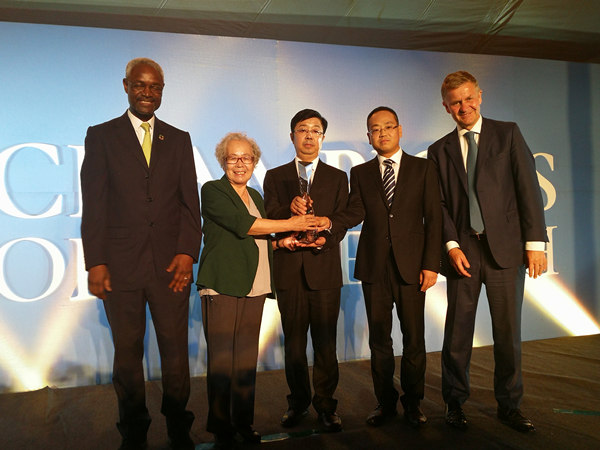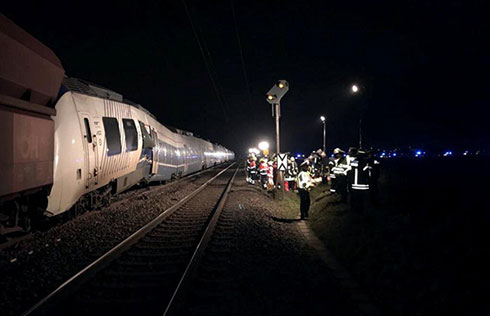

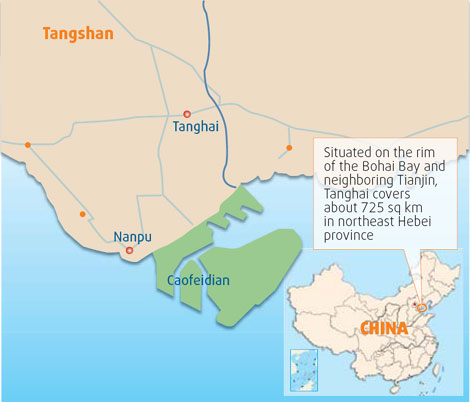
"If you missed the chance to cash in on the fast development in Shenzhen in the 1980s, you can grab the opportunities in Tanghai now."
That's a slogan of a real estate developer in Tanghai, a county in east-coast Hebei province. In 2005, the company invested 170 million yuan to build Tanghai's first five-star hotel, regarded as needless luxury by many at the time in a small county of only 130,000 people.
As time passed, however, the company's bold move has been verified as a farsighted investment. Currently, there are more than 10 three-star and above hotels in Tanghai, with one four-star hotel and two five-star hotels under construction. Occupied by a great number of investors from home and abroad, these hotels are usually booked before 5 pm every day.
The boom scene in Tanghai is mainly due to the prospective port industry of Caofeidian.
At the beginning of this century, Caofeidian was verified as a natural deep water harbor that can berth cargoships with a loading capacity of about 300,000 tons, which can greatly relieve raw material transportation bottlenecks and reduce costs.
Lan Xinhui, vice-president with Design & Research Institute of Beijing Shougang Co, was quoted by Lifeweek as saying, "Compared with the Tianjin port, the unit price of iron ore in Caofeidian can be reduced by about 50 yuan per ton. In China, about 60 percent of the iron ore relies on importation. Caofeidian is a very attractive place to build our new factories."
In 2005, Beijing Shougang Group, China's fourth largest steelmaker by output, began relocating from Beijing to Caofeidian. The move - which also involves building new environmentally friendly smelters - may also go a long way toward solving Beijing's chronic air pollution problems and is also an evidence of an unprecedented reshuffle in China's booming steel sector.
In October 2005, the central government selected the Caofeidian industrial zone as a pilot area for developing the recyclable economy.
In 2006, Caofeidian industrial park was included in China's 11th Five-Year Plan (2006-10). According to the plan, with 150 billion yuan investment, the port handling capacity of Caofeidian can reach 175 million tons by 2010. In the following 20 to 30 years, Caofeidian aims to become the world-class port, with a loading capacity reaching about 500 million tons.
Caofeidian has been a tiny island of four sq km, but it has extended into a land of more than 80 square km through sea fillings since 2003, and it targets to be developed to 310 square km.
For China, it's not only building a large-scale deep-water port, but seeking lowering energy consumption. According to the blueprint, focusing on the steel sector, a long industry chain, including boatyard, salt plants, cement factories and chemical firms, will grow in Caofeidian gradually.
"The longer industry chain will result in higher efficiency. At present, the factories unrelated to the industries in plan are refused entry into Caofeidian, including the traditional chinaware sector in Tangshan," Caofeidian Industrial Zone Administration Commission Deputy Director Xue Boxun says.
Without a doubt, the emerging large-scale factories will bring a large number of labor forces. Near the industry zone, an ecological new town is needed and the nearby Tanghai is just what we want, says Xue.
Caofeidian's plan is in line with Tanghai's expectations. For nearly half a century, Tanghai has been a farming county. Yet, from 2000 to 2003, the county suffered from continued drought and the local planting area dwindled to less than 8,666 hectares. As quoted by the Economic Observer, a local official described the situation at that time by saying: "For Tanghai, it's quite hard to carry on as a farming county. People here are pining their hopes on the to-be constructed port of Caofeidian".
Since 2003, Tanghai began to be frequently associated with Caofeidian. As expected, the rapid development of Caofeidian has revitalized the economy of Tanghai. The service industry, including traffic transportation, hospitality, entertainment and real estate, has developed into Tanghai's pillar industry. Currently, there are more than 10,000 migrants in Tanghai.
The financial number shows a clear picture of the county's great changes. In 2003, Tanghai's fiscal revenue was about 60 million yuan. In 2006, the number was increased by 320 million yuan and the county has maintained a 100-percent annual growth rate for two consecutive years. In 2007, the Tanghai's gross domestic product was about 4.5 billion yuan and the fiscal revenue reached 490 million yuan.
As in Caofeidian, local officials in Tanghai are also very selective about their investment projects which are required to be large-scale companies and related with the industry chain in Caofeidian.
"Currently, we are not likely to consider companies with assets below 30 million yuan," Zhang Danping, a local official, says.
Last May, Tanghai's another neighbor - Nanpu began to be featured in the spotlight. An oilfield discovered in Bohai Bay is China's largest such discovery in more than 40 years. The Jidong Nanpu Oilfield has a reserve of one billion tons, or about 7.35 billion barrels.
Located between Caofeidian and Nanpu, the housing prices in Tanghai have been keeping rising for years. In 2003, the average price was 1,000 yuan per sq m. Now, the unit price has risen to 4,000 yuan per sq m and in some areas, the price is nearly 10 times higher than five years before.
In terms of future housing prices, people haven't yet reached a consensus. Some observers say the average price will absolutely soar to 5, 000 yuan per sq m by the end of this year. Others predict that the supply will exceed demand quite soon, since so many apartments are under construction and big companies, like Shougang, will build employee houses by themselves rather than buying commercial ones.
Gao Zhanfeng, a local restaurant owner, planned to open a cheap hotel in 2006. But he later gave up the idea because he thought visitors would favor big hotels. Now, he says he regrets missing the investment, because in 2006 real estate prices weren't high. Based on his estimation, even if the hotel wasn't opened for business, the investment on real estate would have still made a lot of money.
But Gao says he has three houses now and he is planning to enlarge the scale of his restaurant and also wants to work with his friends as real estate agents.
"I nearly missed the fast-growing period of Tanghai. I don't want to miss it again," says Gao.
(China Daily 08/25/2008 page10)


